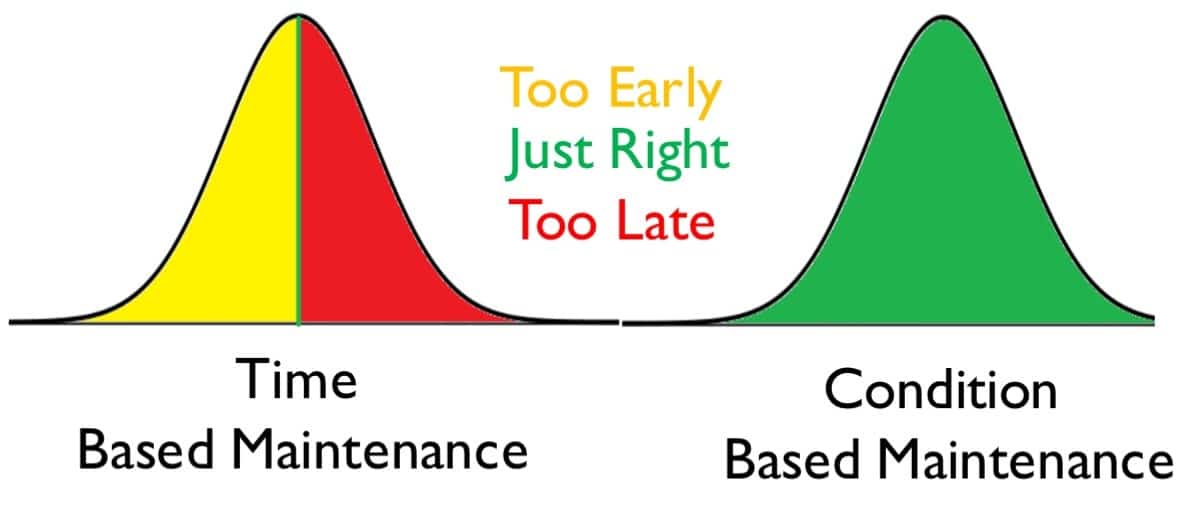This article will answer the following questions?
- When is the best time to change my oil?
-
Can I miss an oil change?
-
How can I make my lubricating oil last longer?
There are a few types of maintenance strategies a company can adopt. You can do run to failure aka reactive maintenance, which for when the machine is working, is very little effort, but causes a mad panic and rush when it fails without warning. This loss of uptime on the machine can lead to machinery operators standing idle, lack of production so less of your product or service is provided, missed client deliveries, product wastage, warehouse backlogs etc which all cost time and money to your business. This is quite a rarely used strategy these days, but in machines that are not critical, are quick to replace / repair and you have spare parts on standby at all times then this is a viable option. However for those that have machines that are vital to your business operations such as production line, power generation or transportation / delivery machinery and vehicles then a different approach is needed. In steps time based maintenance using predictive failure models, which replaces parts before they would normally fail.
Most components in your machinery including the oil will have undergone test bed to failure analysis to establish a typical life for each component. This data allows equipment manufacturers to adjust their suggested maintenance intervals and also calculate extended warranty plans based on expected number of claims.
Traditionally, in the aircraft industry the maintenance schedules are skewed heavily towards safety over component life because of the consequences of a failure during flight. So if you take a hypothetical component that lasts between 3 and 7 years with <0.01% failures under 3 years and by 7 years >99.9% components have failed, a component may be replaced at 2 years just to be on the safe side. This means the component may have anywhere between 1 and 5 more years of life left when replaced in this example. In this industry the budgets tend to be much larger than other industries to afford such waste. In fact the hundred million dollar equipment tends to be over engineered to give much longer expected life’s, but condition monitoring is also used to detect the low risk very early life failures too.
However in other industries where profit margins are much smaller, replacing components where there is plenty of life left can be the difference between profit and loss for a company.

Having been responsible for the diagnosis of over 1 million oil samples during my career to date, I performed a study for my own interest to see how many times the recommended drain intervals were actually correct. I looked across approx 20,000 samples from mobile plant, road haulage and marine to see what the condition of the oil was vs the recommended OEM oil drain. I found that only 5% of samples if using only OEM change recommendations would be changed at the perfect time, i.e. when just borderline cautionary flag. However, for practicality of machine services it seemed better to work on how many times the OEM recommendation was a normal service inspection too early or too late. To explain this better, let’s assume the service engineer inspects every 250 hours and the oil change is scheduled at 500 hours. I looked at how many times the oil needed changing at the 250 hour mark (e.g. due to contamination or overheating causing earlier than expected deterioration of the oil) and how often it was normal at 750 hours. This interval varied on industry and OEM, but I found ~85% of the oil would have been changed too early or late if working on OEM drain intervals alone and no use of oil analysis. This is because suggested drain intervals are just a best guess or an average based on a model of how your machine may be operating. They are better than nothing if no intention of ever using oil analysis, however, no model can predict all the very small subtle differences in your operating conditions compared to another machine half way across the world. So sometimes it will be too cautious and sometimes not cautious enough.

Hence, this is why condition based maintenance is the only true way to assess if your equipment is due for component replacements. Rather than working on a model of a machine in a research facility, it is based on your actual equipment data so you can make condition based maintenance decisions.
In fact most of the big machinery manufacturers support a condition based approach to maintenance and particularly enabling extended oil drain intervals under warranty. Admittedly some may put caveats such as the extended drain must be with their branded oil or servicing must be performed by their dealer network etc to ensure they can generate some aftermarket revenue, but when you do the sums you will still work out better off.
So stop crossing your fingers with your reactive maintenance strategy, or rolling the dice with time based predictive models for maintenance. Instead embrace a condition based approach to your maintenance. This can start with your very first oil sample. So why not make this change today and transform your maintenance strategy for the better?


